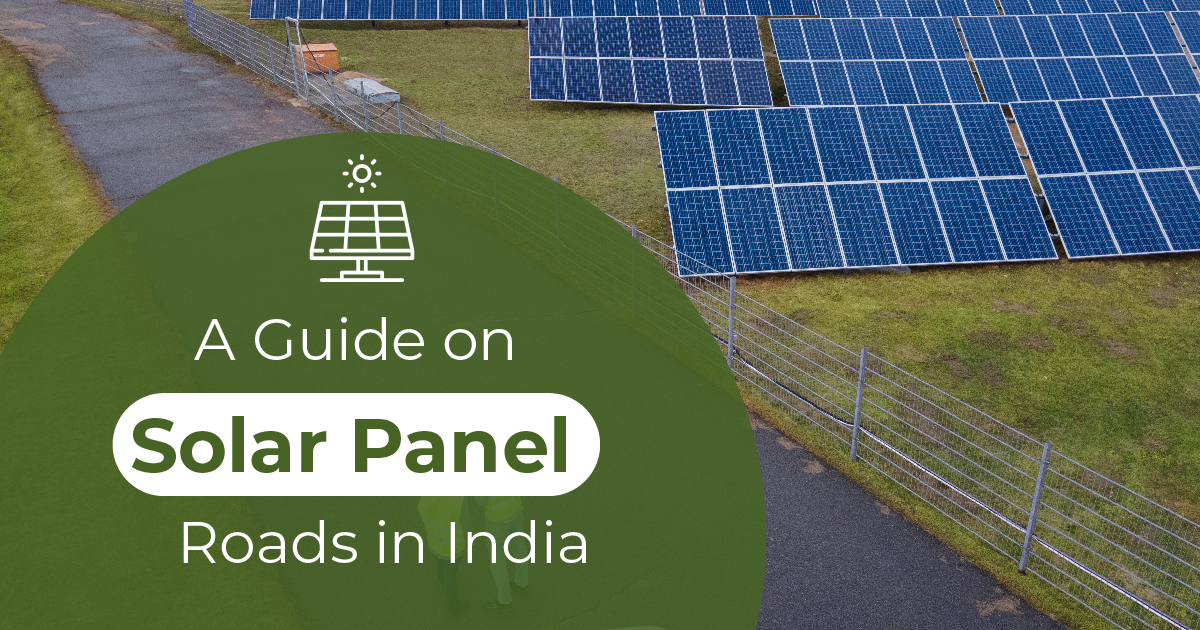A pool of solar panel benefits, especially cost savings and environmental advantages have made more people think about switching to solar energy. It is being widely adopted in the residential, commercial, institutional, medical, industrial, and many more sectors. Not just in India, the solar tech advancements are making the world go solar to save the planet from rising global warming.
No longer are the days when solar devices are used just for cooking or heating water. Breakthroughs in the solar industry have resulted in the development of solar system for residential flats, homes, gardens, agricultural fields, manufacturing industries, transportation devices, and more applications.
Solar roads are an innovative technology trending in the solar industry to produce green energy and protect the environment from increasing pollution. However, there is a constant debate on whether solar panel roads are a good option or not.
Roads traditionally and presently built from cement, concrete, asphalt, and other materials are being redesigned to replace them with materials that offer renewable energy. Keep reading to know more about solar roads and their benefits.
What are Solar Roads?
The roads built using solar PV (photovoltaic) technology are called solar roads. The road surface is fitted with solar PV cells or solar panels to generate energy from the rays of the sun. The major change is in a bid to produce energy from the roads, covering 0.5% of the surface of the earth.
This technology is used on residential streets, parking lots, public roads, and driveways. Solar roads are believed to be started in multiple locations worldwide. These roads are designed not just to generate clean and green energy but improve the driving experience for everyone.
Benefits of Solar Roads in the Future
Solar roads are considered to be a great choice for the future for providing the following benefits.
Source of Electricity
As mentioned above, solar roads are built with solar panels that use the sun to produce electricity. Renewable electricity can be used by local communities for lighting the roads and streets. The amount of electricity produced depends on multiple factors like the orientation of the driveway, geographic location, and shading.
The quantity of electricity will be less on the congested road as vehicles block the absorption of sunlight. The solar driveways would produce significant amounts of electricity during the day as there is less traffic on the road during the daytime. Electric vehicles (EVs) can be recharged conveniently at any parking lot or rest stop by simply plugging the vehicles in. Be sure to recharge your EV while not driving.
Renewable Energy
Just like rooftop solar panels for home, solar roads are known for producing renewable energy which reduces carbon emissions. To fight against the climate challenges, scientists are recommending relying on green sources of energy rather than fossil fuels that emit harmful greenhouse gases. The development of solar roads will contribute a lot to saving the planet and ensuring a pollution-free future for the coming generations.
Solar-Powered Traffic Lights
Solar energy is becoming an increasingly popular choice to power traffic signs. The development of solar-powered traffic lights helps improve the visibility of road signs and facilitates increasing road safety improvements. Megamax traffic lights are designed with high-frequency Crystalline solar panels. These LED traffic lights use heavy-duty solar-grade batteries.
The use of LED technology provides clear visibility even in harsh weather when existing lights do not work due to power outages. Moreover, these lights are cost-effective alternatives to traditional traffic lights with less maintenance cost and long-lasting nature.
Solar traffic lights are highly portable to be easily carried and operated by relief workers and traffic police wherever traffic requires to be maintained. They can be installed on state highways, parking lot, national highways, border roads, expressways, rural roads, etc.
Inclusion of High-Tech Features
Solar roads are designed with extra high-tech features. For example, features to heat the road. They are built in a way similar to conventional block paving, where the blocks are connected together to create an even surface. Also, they are easier and cost-effective to repair. Just the damaged blocks are taken off and replaced.
The inclusion of these high-tech features like the feature to heat the road is beneficial in wet and cold regions to melt snow and ice and make roadways safe for driving. They make roads safe after heavy rains, heavy snowfall, and cold conditions.
Good Durability
Just like existing driveway materials, solar panel roads are also designed to last a long time with minimal maintenance. They can carry a lot of weight of vehicles and can strongly withstand any kind of climatic conditions. No additional cleaning, maintenance, or special treatment is required for solar roads.
Less Maintenance Costs
Solar roads need almost similar maintenance as existing roads. To ensure that solar roads last longer, they need to be cleaned regularly in a year to remove dirt. Professional cleaning by experienced and knowledgeable experts is recommended to ensure safe cleaning and maintenance with no errors.
Just like residential and commercial solar panels, solar roads don’t have any moving parts. This means there is no damage from normal regular use. Only inverters need to be changed every 5-10 years to keep them operating optimally. Also, maintain the cables to ensure their effective working.
Future of Solar-Powered Roads in India
The installed capacity of solar power in India has increased in the past decade. According to Road Transport and Highways Minister Nitin Gadkari, the government is working on building solar-powered highways. These highways will allow charging the buses and heavy-duty trucks. He further added that the government is planning an ITS (intelligent traffic system) installation on 15,000km of national highways by the end of 2024.
The main objective behind an ITS installation is increased road safety. Kundli-Ghaziabad-Palwal (KGP) is the first solar-powered expressway in India, more greenfield expressways are proposed to be developed in the coming years. A well-developed infrastructure improves job opportunities and economic activities and leads to the creation of more new businesses.

